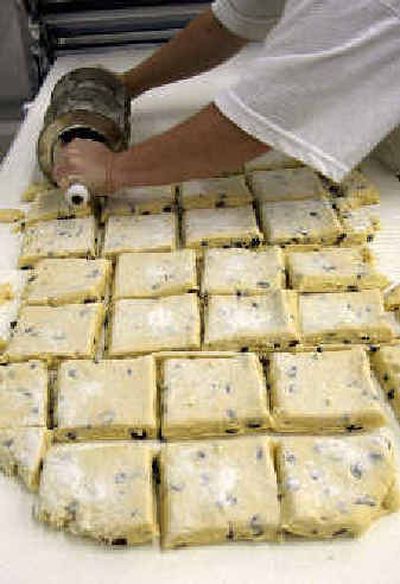Baker’s dilemma led to new line of gluten-free products

MORRISVILLE, N.C. — The scents of molasses, sugar and ginger hang in the air like an invitation to sin as Lee Tobin shows off his new bakery.
If this were a typical bakery, Tobin wouldn’t even be able to taste the goods. Gluten, the protein found in wheat and other grains, makes him sick.
So Tobin has turned his illness into an entrepreneurial opportunity: a line of gluten-free baked products made here for sale at Whole Foods grocery stores.
The Whole Foods Gluten-Free Bakehouse line went on sale Monday at Whole Foods in the Carolinas and the Atlanta area, along with Harry’s Farmers Market stores in Atlanta. By November, Whole Foods hopes to expand to Virginia, Kentucky, Maryland, New Jersey, Pennsylvania and Washington, D.C.
Tobin has been a baker for the Austin, Texas-based natural and organic grocery chain for 11 years. Eight years ago, he was diagnosed with a skin disorder linked to foods with gluten.
Giving up wheat wasn’t easy. Tobin is an avid cyclist whose carbo-loading had evolved into “a loaf-a-day habit” by the time he was diagnosed. But he worked as a baker at Whole Foods’ Chapel Hill store, so he began experimenting with gluten-free recipes that earned a devoted clientele.
“It’s all kind of evolved out of self-preservation,” he said.
Gluten is a protein found in certain grains. When wheat flour is mixed with water, for example, it acts as the “glue” that holds bread together as it is kneaded and baked.
In people with celiac disease, an autoimmune disorder, gluten damages the small intestine and causes symptoms including diarrhea, weight loss, abdominal pain, chronic fatigue, weakness and malnutrition, according to the University of Maryland’s Center for Celiac Research. In some cases, like Tobin’s it causes severe skin rashes.
A recent study by the center estimated that as many as one in 133 people suffers from celiac disease, though many may not realize it. The disease is incurable, but can be managed by avoiding gluten — something that’s not as easy as it sounds.
Even infinitesimal amounts of gluten can cause a reaction, according to those with the disorder. The substance is often used as a thickener and can appear in products as diverse as soy sauce, beer and canned chipotle peppers.
The marketplace for specialized foods has swelled as businesses become more aware of how common celiac disease, wheat allergies and other food intolerances are. The Web site of the Seattle-based Gluten Intolerance Group lists links to 10 food makers and two online groceries for people with food allergies.
Recently, news reports about the plight of 8-year-old Haley Waldman have called attention to the problem. The New Jersey girl’s first Holy Communion was declared invalid because a priest gave the young celiac disease sufferer a wafer containing no wheat, violating Roman Catholic doctrine.
Initially, Whole Foods’ new Gluten-Free Bakehouse will produce 27 products ranging from breads to cookies to pizza crusts. The goods are not cheap — $4.99 for a one-pound, 12-ounce loaf of sandwich bread compared to $2.49 for a fresh loaf of white bread from the regular bakery. The cost is driven by the price of wheat substitutes, which can include millet, buckwheat, quinoa, tapioca and rice, Tobin said, as well as other items added for flavor.